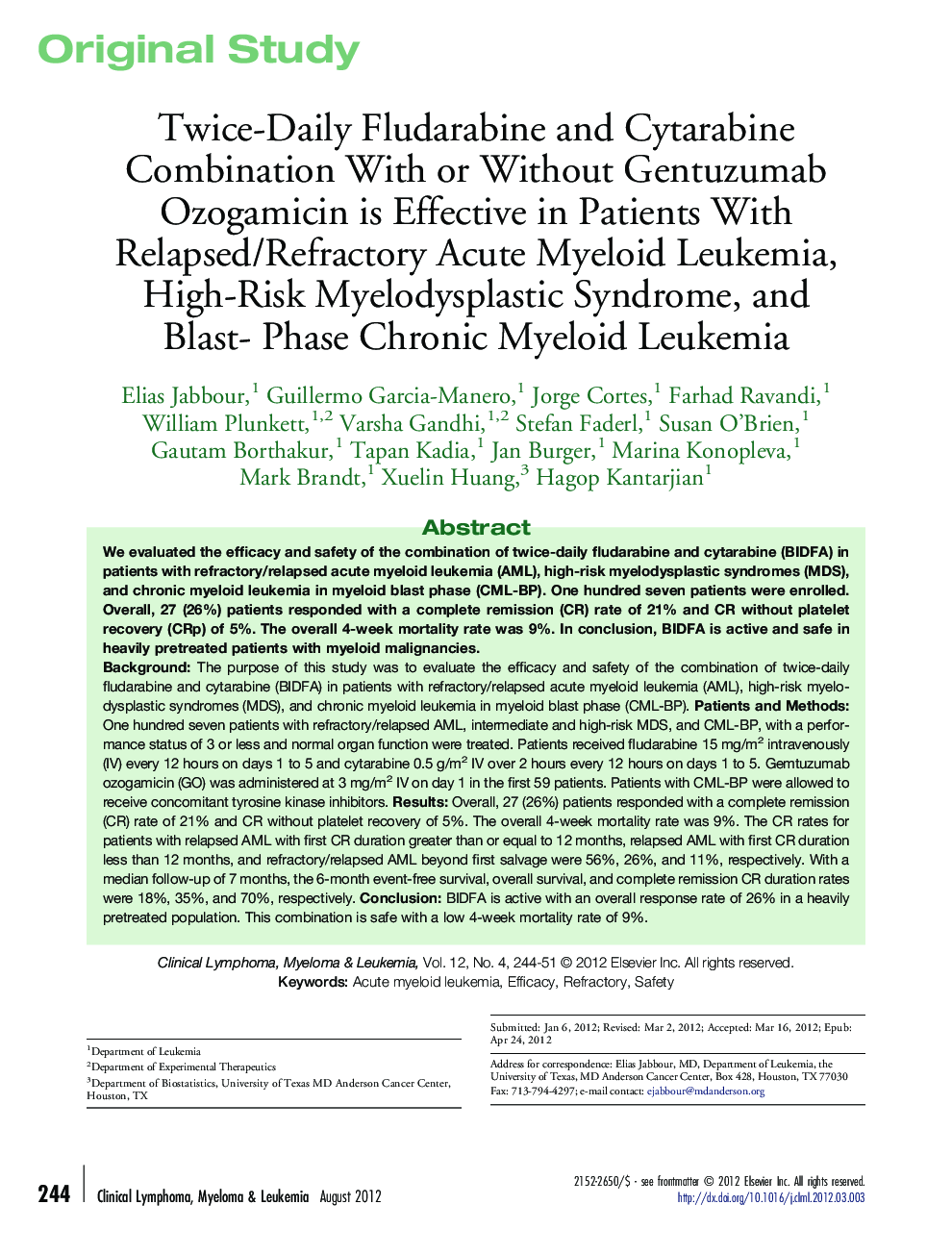| Article ID | Journal | Published Year | Pages | File Type |
|---|---|---|---|---|
| 2755284 | Clinical Lymphoma Myeloma and Leukemia | 2012 | 8 Pages |
BackgroundThe purpose of this study was to evaluate the efficacy and safety of the combination of twice-daily fludarabine and cytarabine (BIDFA) in patients with refractory/relapsed acute myeloid leukemia (AML), high-risk myelodysplastic syndromes (MDS), and chronic myeloid leukemia in myeloid blast phase (CML-BP).Patients and MethodsOne hundred seven patients with refractory/relapsed AML, intermediate and high-risk MDS, and CML-BP, with a performance status of 3 or less and normal organ function were treated. Patients received fludarabine 15 mg/m2 intravenously (IV) every 12 hours on days 1 to 5 and cytarabine 0.5 g/m2 IV over 2 hours every 12 hours on days 1 to 5. Gemtuzumab ozogamicin (GO) was administered at 3 mg/m2 IV on day 1 in the first 59 patients. Patients with CML-BP were allowed to receive concomitant tyrosine kinase inhibitors.ResultsOverall, 27 (26%) patients responded with a complete remission (CR) rate of 21% and CR without platelet recovery of 5%. The overall 4-week mortality rate was 9%. The CR rates for patients with relapsed AML with first CR duration greater than or equal to 12 months, relapsed AML with first CR duration less than 12 months, and refractory/relapsed AML beyond first salvage were 56%, 26%, and 11%, respectively. With a median follow-up of 7 months, the 6-month event-free survival, overall survival, and complete remission CR duration rates were 18%, 35%, and 70%, respectively.ConclusionBIDFA is active with an overall response rate of 26% in a heavily pretreated population. This combination is safe with a low 4-week mortality rate of 9%.
